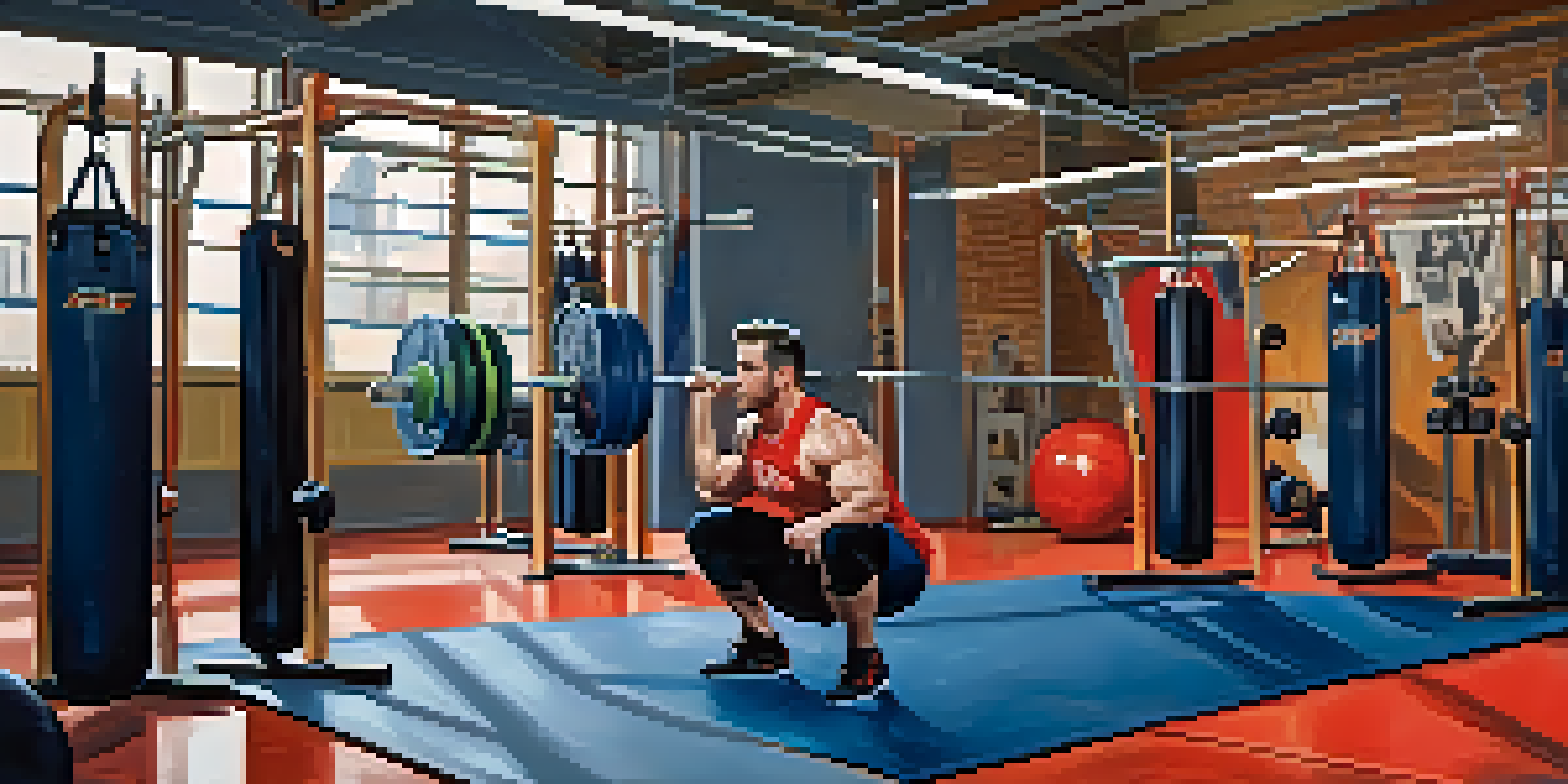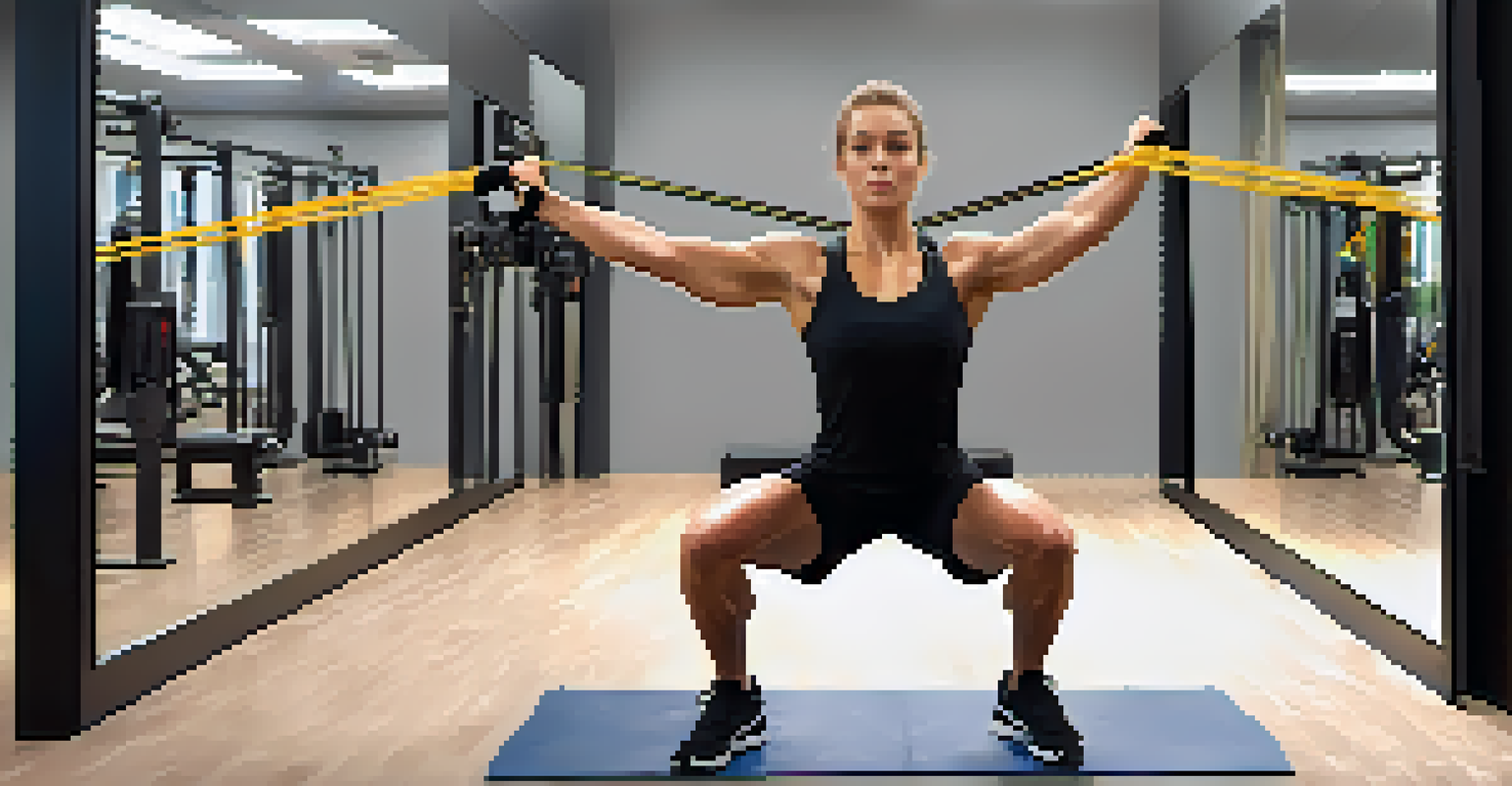Top Mobility Exercises for Powerlifters to Prevent Injuries

Understanding the Importance of Mobility for Powerlifters
Mobility is often overlooked but plays a crucial role in powerlifting. It refers to the ability of your joints to move freely through a full range of motion. When powerlifters prioritize mobility, they not only enhance their performance but also significantly reduce the risk of injuries during lifts.
The ability to simplify means to eliminate the unnecessary so that the necessary may speak.
Think of mobility as the oil in the engine of your body; without it, everything can grind to a halt. Improved mobility allows for better positioning during lifts, which translates to increased strength and efficiency. Ultimately, investing time in mobility exercises can lead to more effective training sessions and better results.
Incorporating mobility work into your routine isn’t just beneficial for experienced lifters; it’s essential for beginners as well. Everyone can benefit from improved joint health and flexibility, setting a solid foundation for future strength gains.
Dynamic Warm-Ups: Getting the Blood Flowing
A dynamic warm-up is an excellent way to kick-start your mobility routine. These movements, such as leg swings and arm circles, help to increase blood flow to your muscles and prepare your joints for the demands of powerlifting. It’s like warming up a rubber band before you stretch it; the more prepared it is, the less likely it is to snap.

Incorporating dynamic stretches into your pre-lift routine can enhance your range of motion and support better lifting mechanics. For instance, performing walking lunges with a twist not only activates your legs but also promotes thoracic spine mobility, which is essential for squats and deadlifts.
Mobility Boosts Powerlifting Performance
Prioritizing mobility enhances strength, efficiency, and reduces injury risk for powerlifters.
Remember, the goal is to feel energized rather than fatigued before your heavy lifts. Spend about 10-15 minutes on dynamic movements to ensure your body is ready to perform at its best.
Hip Openers: Targeting a Key Area for Lifters
Hip mobility is vital for powerlifters, as tight hips can lead to poor squat depth and increased injury risk. Exercises like the pigeon pose and hip flexor stretches are excellent for targeting this crucial area. Think of your hips as the hinges on a door; if they’re stuck, the door won’t open smoothly.
Flexibility requires an open mind and a wide range of experiences.
To perform a basic hip opener, try the butterfly stretch: sit on the floor, bring your feet together, and gently press your knees down with your elbows. This simple movement can create significant improvements in your hip flexibility over time, allowing for better squat mechanics.
Incorporating these stretches into your routine a few times a week can lead to noticeable improvements in your lifts and overall comfort during training. The more mobile your hips are, the more power you can generate in your squats and deadlifts.
Shoulder Mobility: Enhancing Upper Body Performance
Shoulder mobility is equally important for powerlifters, especially for bench pressing. Poor shoulder flexibility can limit your range of motion and compromise your form. Exercises like shoulder dislocates with a resistance band can greatly enhance your upper body mobility, allowing for more effective lifts.
Imagine trying to lift a heavy weight with stiff shoulders; it’s not only difficult but also risky. By improving shoulder mobility, you can achieve a better bar path in your lifts, which is crucial for maximizing strength and minimizing injury risk.
Dynamic Warm-Ups Prepare Your Body
Incorporating dynamic warm-ups increases blood flow and prepares your joints for heavy lifting.
Incorporating shoulder mobility exercises into your warm-up or cool-down routine will ensure your upper body is primed for heavy lifting. A few minutes of targeted work can lead to significant gains in your performance.
Ankle Mobility: The Foundation for Effective Lifts
Ankle mobility is often underestimated, but it plays a significant role in your squats and deadlifts. Limited ankle mobility can hinder your ability to achieve proper depth when squatting, leading to compensations that increase injury risk. Exercises like ankle dorsiflexion stretches can help improve this critical area.
To perform this stretch, simply kneel on one knee and lunge forward, keeping your back heel on the ground. This will help to open up your ankles and prepare them for heavier loads. Think of your ankles as the foundation of a building; if they’re weak, the entire structure is at risk.
Regularly incorporating ankle mobility exercises can help you maintain proper form and improve your overall lifting performance. Strong, flexible ankles contribute to better balance and stability during your lifts.
Spinal Mobility: Keeping Your Back Healthy
Spinal mobility is essential for maintaining a healthy back during heavy lifts. Poor spinal mobility can lead to compensatory movements and increase the risk of injury. Incorporating exercises like cat-cow stretches and thoracic spine rotations can enhance your overall spinal flexibility.
Think of your spine as a stack of blocks; if some blocks are stiff, it becomes difficult to maintain balance. Improving your spinal mobility allows for better posture and alignment during lifts, which is crucial for both safety and performance.
Consistent Mobility Training is Key
Regular mobility work leads to improved performance, recovery, and overall enjoyment in powerlifting.
Make spinal mobility exercises a part of your routine to ensure your back remains strong and flexible. A healthy spine is key to lifting heavier weights without risking injury.
Integrating Mobility Work into Your Training Routine
Integrating mobility exercises into your training routine doesn’t have to be complicated. Start by designating a specific time before or after your workouts to focus on mobility. This could be as simple as spending 10-15 minutes on your warm-up or cool-down.
Consider creating a mobility circuit that incorporates exercises targeting all key areas, such as hips, shoulders, and ankles. This structured approach will ensure you are addressing all necessary components without feeling overwhelmed.

Over time, you’ll notice that consistency pays off—increased flexibility, improved performance, and a reduced risk of injury. Remember, mobility work is an investment in your long-term lifting success.
The Benefits of Consistent Mobility Training for Lifters
The benefits of consistent mobility training extend beyond just injury prevention. Regularly working on your mobility can lead to improved performance, increased strength, and better overall movement patterns. It’s a win-win situation that every powerlifter should consider.
Moreover, a well-rounded mobility routine can help you recover more effectively between training sessions. When your muscles and joints are flexible, you’re more likely to bounce back from intense workouts without feeling stiff or sore.
Ultimately, prioritizing mobility in your training can lead to a more enjoyable and sustainable lifting experience. By taking care of your body, you’ll be setting yourself up for long-term success in the sport of powerlifting.